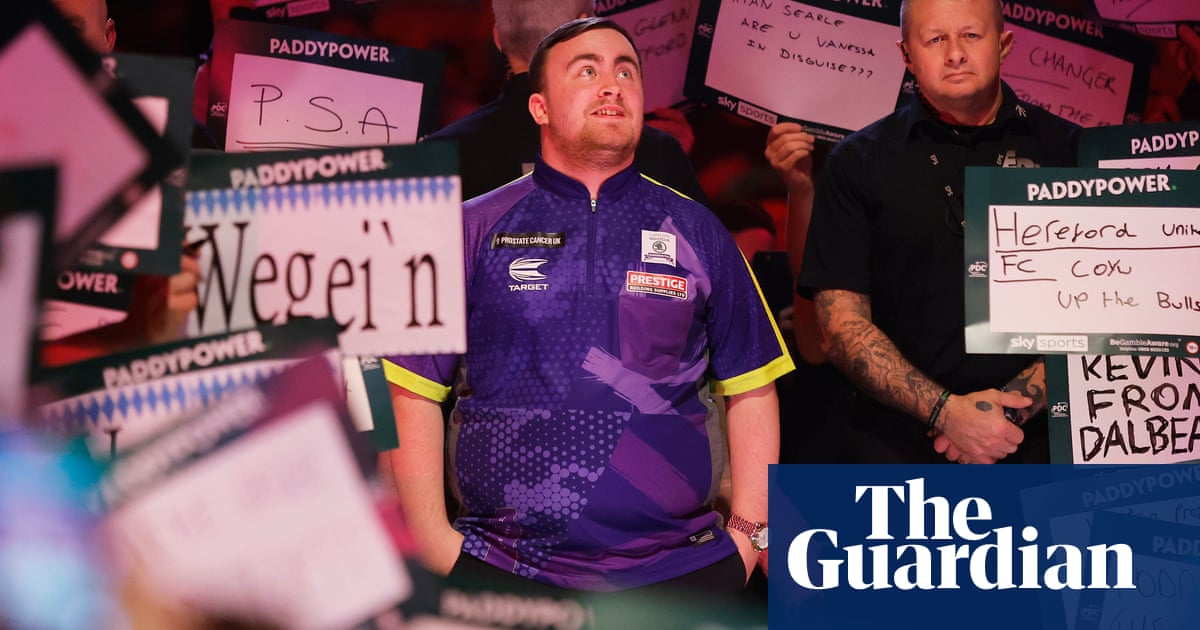
ometimes tennis players have a thing where they cannot hit a ball over the net or nothing’s right and you’re just out of it mentally. I had one of those weeks where I was like: ‘If I quit tomorrow, I’ll be OK,’ ” says Zina Garrison, laughing. Speaking 30 years to the day since her glorious 1990 Wimbledon run began, Garrison’s enduring memory is simply of the week before, when it did not seem possible.
Instead of retirement, she played the tournament of her life. Monica Seles arrived in their quarter-final on a 32-match winning streak and the defending champion, Steffi Graf, had reached a mind-numbing 13 consecutive slam finals when they faced a round later. Both records fell.
Garrison crunched a forehand winner on Seles’s match point before reeling off 10 of 12 points to win 9-7 in the third set and then she cut Graf up with her vicious slice in three sets. She was the only player to beat the two unstoppable forces of the 90s in the same tournament.
As the world woke to the sight of the first black woman in the Wimbledon final since Althea Gibson in 1958, the tennis was only one part of why her success resonated. An example: Garrison was 26 and she had been a top player for eight years. Yet she was the only one without a clothing sponsor for most of her career.
At Wimbledon, Martina Navratilova had gifted her clothes from her Nike line until Garrison signed a Reebok contract the night before Navratilova ended her run in the championship match with a 6-4, 6-1 win. It took a Wimbledon final for her to earn the type of deal lesser players immediately attained.
“For five years, even when I made it to top four in the world, I still had no deal,” says Garrison. “I was very aware of what was going on and I was always told: ‘If you make it to this ranking, you’ll get a deal. If you make it to this [round],’ you know? You had white girls behind me, they’re making way more money and their ranking or consistency wasn’t even there.”
Being a black player in the 80s meant that and more. To Garrison, it was being constantly described as the African-American player rather than one of the many Americans on tour. It was agents who would reason the lack of contracts away by implying she didn’t have “the look”.
Coco Gauff has only ever known a tennis world dominated by two black female players and so she speaks her mind, but back then it meant self-censoring lest you attract too much attention. From a young age Garrison was taught by her coach, John Wilkerson, to let her racket speak: “We can’t focus on what someone’s going to give us or not give us,” she says. “All we can do is be there for [so long] that you can’t deny it.”
Her success was undeniable. She won a doubles gold medal with Pam Shriver and a singles bronze at the 1988 Olympic Games in Seoul. She finished her career with 14 singles titles, 587 career wins and the distinction of beating all of the legends of her time deep in slam draws. In doubles, she reached two women’s Australian Open finals and won three mixed doubles slam titles.
However, Garrison’s relationship with her sport was always volatile. The pressure of being constantly compared to Gibson and the trauma of losing her mother was suffocating. From the ages of 19 to 28 she suffered from bulimia and it would take therapy later in her career to address those problems. Somehow, on the court she was still able to build an exemplary career.
“I don’t really know how,” she says. “As I look back, I have no idea. But also I have looked back and thought about some matches I should have won and I didn’t have the energy to win.
“Now I can say it was probably because I was binging and purging. And also, later on I found out that it develops a chemical imbalance … so I still constantly live with dehydration that I have to be careful of.”
The killing of George Floyd and the widespread campaigning that followed has given Garrison reason to think deeply about her own experiences. In recent weeks the USTA has been blasted by the former player Leslie Allen for its own history. Garrison had a well-publicised racial discrimination lawsuit that was settled with the USTA in 2009 after she argued that as the Fed Cup captain she was paid a lower salary than the Davis Cup coach, Patrick McEnroe, and her successor, Mary Joe Fernández.
“I was told at the time: ‘That doesn’t really happen.’ No one would really back me up. People in the background would tell me stories but nobody was willing to come to the rescue. There were only two people in that time getting ready to go on record and that was Billie Jean King and Venus Williams.
“It’s been tough for me … The bottom line is I wasn’t crazy. Things have improved but sometimes people get a misconception because you have a couple of top black players and they say: ‘Well, it’s not bad, look at Venus and Serena.’ Just because you have a couple that it has been solved.”
Throughout lockdown, Garrison has been hosting her show Game Set Chat with the former player Chanda Rubin, interviewing figures such as Billie Jean King to Frances Tiafoe. During a town hall discussion on the country-wide protests, Garrison pointed out the need for athletes who do speak up to educate themselves and the benefits of the rage seen in the protests that have swept across the US and the world.
“When I say not keeping the peace, I don’t want the world to be destroyed but I mean we have to keep that pressure on. For example, we had the Montgomery bus boycott [after the arrest of Rosa Parks in 1955]. Most people don’t realise that it was going for a year or so. It didn’t happen overnight. We’ve got to keep the pressure on because what some people want us to do is start forgetting about it so they can go back to some sense of normalcy.”
Tennis has been a focal point of Garrison’s life. For 28 years she has owned an academy in Houston where she helps young players, particularly from ethnic minorities, take steps into the sport.
In 2017, her life was turned upside down by Hurricane Harvey as she escaped the wreckage of her house with her Olympic medals and little else. She did not realise how badly affected she was until she was prioritising her pupils over her own wellbeing.
“One of my cousins, who is a therapist, was like: ‘Zina you have PTSD.’ I was like: ‘No, no, no.’ I took her advice and I finally started admitting: ‘Wow, I just lost everything. I have my life but in order to put it back, I need to put me back first.’
“My first thought when Harvey happened was: ‘Let’s get some nets and take them to the kids at the shelter so they can at least play.’ That’s what I did. One of my nieces was crying, she said: ‘Aunt Zina, you are helping all these other people and you have lost everything.’ That’s when I was like: ‘Wow, OK.’”
It is right she should focus more on herself these days, as her help has been enough. Today, when Gauff and Naomi Osaka speak from their hearts, they are standing on the shoulders of players such as Gibson, Allen, Lori McNeil, Rubin, the Williams sisters and Garrison. Players who were strong enough to break down barriers even when it did not seem possible.












